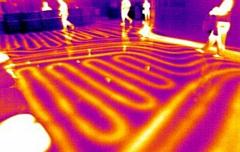Infrared radiation was first discovered over 200 years ago, in 1800, by William Herschel. Herschel was a British astronomer most famous for discovering Uranus. While testing filters for his telescope that would allow him to look directly at the sun, he realized that different-colored filters allowed different amounts of heat to pass through them. He proceeded to conduct an experiment in which he measured the temperatures of the different colors of sunlight when it was split by a prism. While measuring the respective temperatures, he discovered that the colors got progressively hotter. When he moved the thermometer past the red band, outside the visible light split by the prism, he discovered that the area was even hotter. Herschel had found the invisible spectrum of light now known as infrared, which would later become the basis of thermal imaging.
Thermal imaging was first used by the military after World War II as a reconnaissance tool, with cameras mounted on planes that collected images of restricted areas for analysis. By the time of the Vietnam War, IR technology had expanded into commercial and industrial applications. The Swedish company Agema is credited with building the first infrared scanning camera, which was used to inspect power lines. As thermography has advanced and become more portable and less expensive, its practical applications have steadily increased. The use of thermal imaging for building inspection has become very popular because it can locate and document defects in ways that provide more data and greater accuracy than many of the more traditional tools and techniques.
